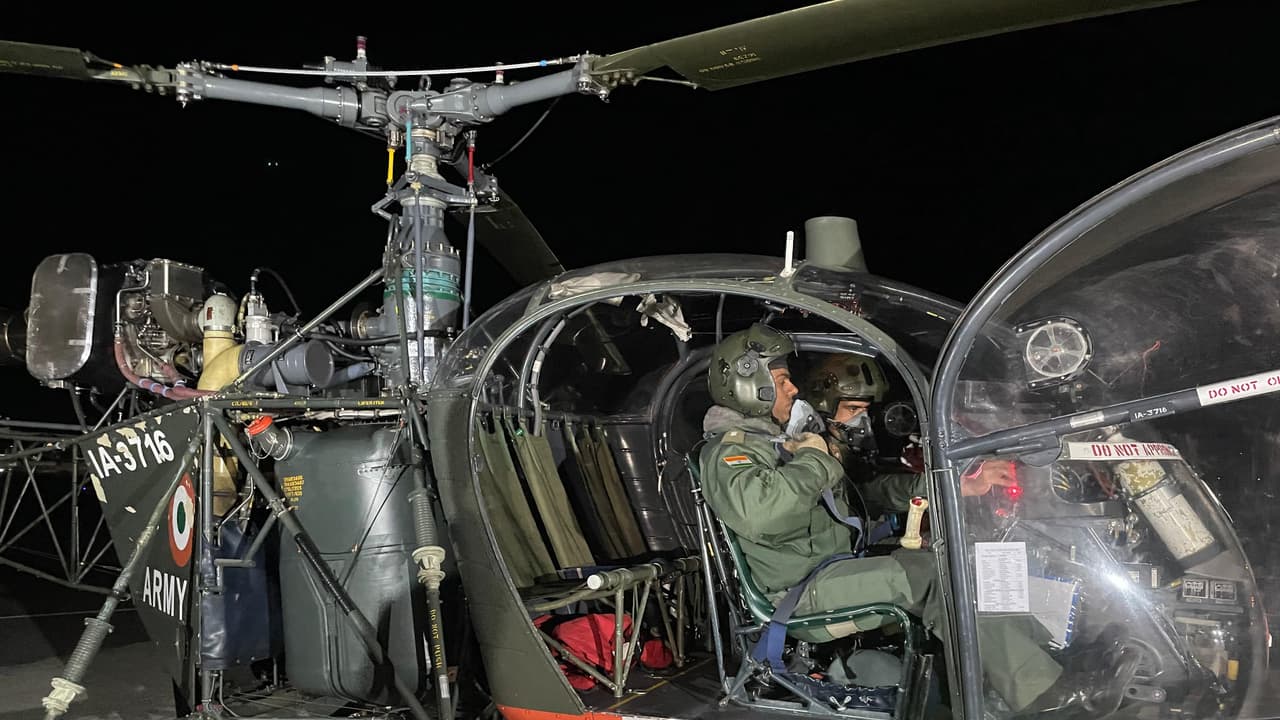The defence ministry has issued a request for information (RFI) for 200 suitable light copters of modern designs to be called as reconnaissance and surveillance helicopters (RSH), for Indian Army and Indian Air Force.
New Delhi: As part of their modernization drive and to replace the ageing Cheetah and Chetak helicopters, the defence ministry has issued a request for information (RFI) for 200 suitable light copters of modern designs to be called as reconnaissance and surveillance helicopters (RSH), for Indian Army and Indian Air Force. Of these, 120 will be procured for the Indian Army’s aviation corps while remaining 80 to be supplied to the Indian Air Force. The RFI – the first step in the tendering process, allows helicopters manufacturers to partner with Indian companies and bid for the project, but the copter will need to be made in India.
As per the RFI, which was issued a day ago, the reconnaissance and surveillance helicopters should be able to operate by day and night. These copters should have reconnaissance and surveillance capabilities, carry small body of troops/Quick Reaction Teams for special missions, carry internal and external loads in support of ground operations with a scout role in conjunction with attack chopper.
These should also have the capabilities for casualty evacuation to include search and rescue and provide dynamic response during aid to civil authorities.
The RFI has asked the vendors to submit their response by August 18 and a meeting with them been scheduled on August 22, 2025.
The Indian Army and the Indian Air Force have been using Cheetah and Chetak helicopters in the Siachen and mountains at above 16,000 feet altitude. Besides, the single-engine Cheetah and Chetak helicopters and the forces also use the twin-engine advanced light helicopters (ALH) in the mountains. Currently, a total of 190 choppers are in operation by both the forces. The two services require more than 450 light helicopters with 250 by the Army and remaining by the IAF.
Learning from recent global conflicts and its own Operation Sindoor, the Indian Army is moving to strengthen its air defence network against modern aerial threats, including drones and swarm systems.
Air Defence Fire Control Radar – Drone Detector (ADFCR-DD) systems
Earlier this month, the ministry had also issued a RFI to procure Air Defence Fire Control Radar – Drone Detector (ADFCR-DD) systems to be used to detect, track, classify and neutralise threats ranging from fighter jets and helicopters to small, low radar-cross-section drones.
Aiming to protect its high-value assets, the Indian Army’s Air Defence wing official said that the threat to high-value assets from hostile aerial platforms has been constantly evolving and the threat manifestation has transitioned from fighter aircrafts and helicopters to low flying, electrically operated drones having very low RCS and lR signatures as has been observed from recent conflicts in Russia-Ukraine, lsrael- Hamas and lndo Pakistan.
During Operation Sindoor, “our adversary on the Western Front relied mostly on drones/swarm drones for not only surveillance but also to cause damage to civil as well as defense installations.”
“Air Defence guns to include L170, ZU 28 and Schilka Weapon Systems, having high rate of fire and using smart ammunition performed exceptionally well to ensure cost effective neutralization of these threats thereby ensuring minimal damage to the protected assets.”
“In order to further enhance the potential of U70 Guns, there is a need for fire control radar (FCR) capable of detecting, identifying, classifying and controlling the ‘ire of weapon systems to neutralize the smallest of the surveillance and attack drones.”
The FCR will be lightweight, mounted on a single vehicle and able to control at least two L/70 or successor guns. It will also transmit target data to very short-range air defence systems.
The RFI specifies that the search radar should use active array technology with digital beam forming, have multi-function capability including track-while-scan, and operate in jamming conditions.
